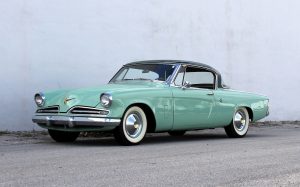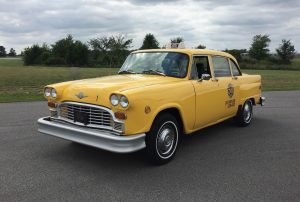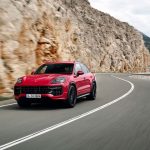Known as the Porsche 542, it almost became Studebaker’s newest model.
This week in 1952, an unusual delegation arrives in South Bend, Indiana. It’s Ferry Porsche, chief designer Karl Rabe, chassis engineer Leopold Schmid, and body designer Erwin Komenda there to sign an agreement to develop and build a four-door sedan for Studebaker in the U.S. market.
Of course, they bring along some samples – a Porsche 356 and the Porsche Type 530, a prototype 356 with a longer wheelbase, larger doors, and a raised roof. Their reason for the agreement was simple – Porsche needed the money to build its own manufacturing facility, something it lacked, as the company was renting space in the Reutter body factory in Zuffenhausen, near Stuttgart.
A continental love affair
The meeting comes about thanks to Studebaker’s head of export operations, Richard Hutchinson, who had always wanted the Indiana-based automaker to become an international presence. He had already arranged to have Studebakers built in foreign markets, and was responsible for the construction of the company’s Hamilton, Ontario, Canada factory. Hutchinson was such a foreign car fiend, he was offered the chance that Studebaker take over the Volkswagen plant for free after World War II. While Hutchinson wasn’t interested, he was intrigued by the vehicle the plant produced: the Volkswagen Type 1. He wanted to have Studebaker become the Beetle’s American distributor, and had one shipped to South Bend. But Harold Vance, Studebaker’s president, wouldn’t even look at it, let alone seriously consider it.
But at their meeting with Porsche, Studebaker directors did look at the Porsche 530, a sports car with room for four, and were not enthralled. The company didn’t sell sports cars. What they really wanted was for Porsche to develop a front-mounted, air-cooled, six-cylinder engine car with more power and less weight than the 1952 Studebaker Champion. For the record, the Champions weighed 2,700 pounds and produced 85 horsepower. Not long after their initial meeting ended, Studebaker also asked that a water-cooled prototype be developed.
For their efforts, Porsche was to receive $500,000, or $5.94 million when adjusted for inflation.
Two years later
Twenty-four months later, Porsche is ready to deliver their prototypes. But Studebaker is in a different place.
Studebaker’s Starlight Coupe, designed by Raymond Lowey, had been released for 1953 to widespread acclaim. But the company mistakenly thought that most buyers would prefer the shorter stubbier sedans that shared their styling but not their appeal and planned accordingly. So, while demand for coupes outstripped supply and sedans went unsold, leading to an $8.3 million loss for the year. That’s $97.5 million today, coming on the heels of a price war between General Motors and Ford Motor Company. The disastrous results and continued poor sales led the company to a hastily arranged merger with Packard in October 1954.
Now a vastly different automaker from the one Porsche dealt with in 1952, he delivers two sedans; the 542L with a 98-horsepower air-cooled engine, and the 542W, with a 106-horsepower water-cooled engine. Both ride on a 111-inch wheelbase and employ a fully independent suspension – unusual for the time – although the new models use many Studebaker parts as well. But the cars were 550 pounds heavier than a Champion, not lighter. And when it came down to the final shakedown, the head of advanced engineering, a rather young John Z. DeLorean, was unimpressed by its excessive vibration, oversteer, and bug-like appearance.
“This vehicle has a large amount of technical appeal, but a number of items need refinement to increase its overall appeal as a small car to the average American car buyer,” he said at the time.
The project was dead.
Porsche would try again, with the Type 633, a rear-engine, air-cooled two-door sedan, but was again rebuffed. By this point, Studebaker just didn’t have the money to proceed, if they wanted to.
Instead, Studebaker would enter into an agreement to distribute Mercedes-Benz, Auto Union, and DKW vehicles, beginning in 1957. In 1964, with Studebaker circling the drain, Daimler paid Studebaker $5 million to exit their agreement, going on to establish Mercedes-Benz, with many dealers dropping Studebaker to become exclusive Mercedes-Benz dealers.
But one wonders what might have happened to both companies if the deal went through.










0 Comments